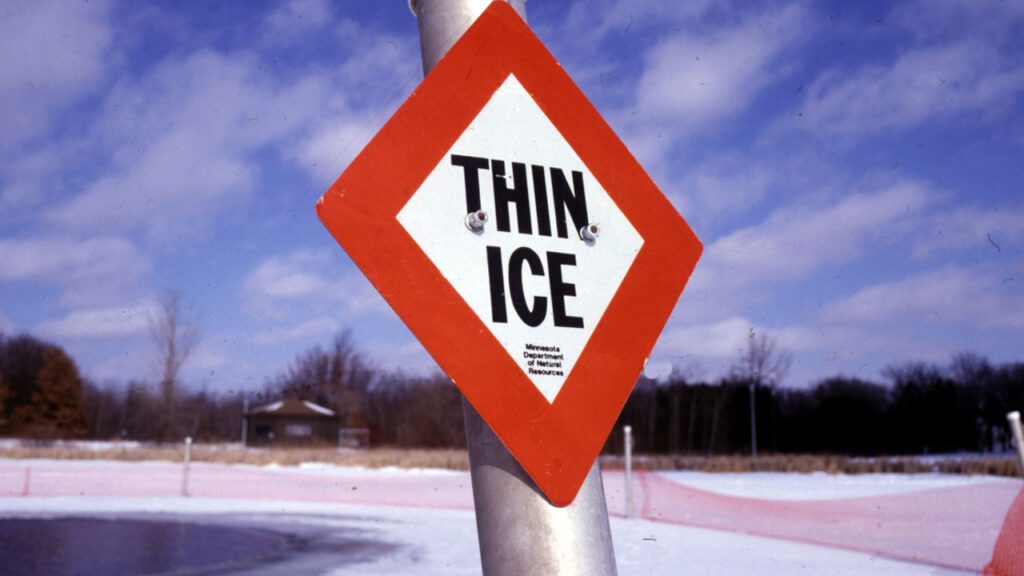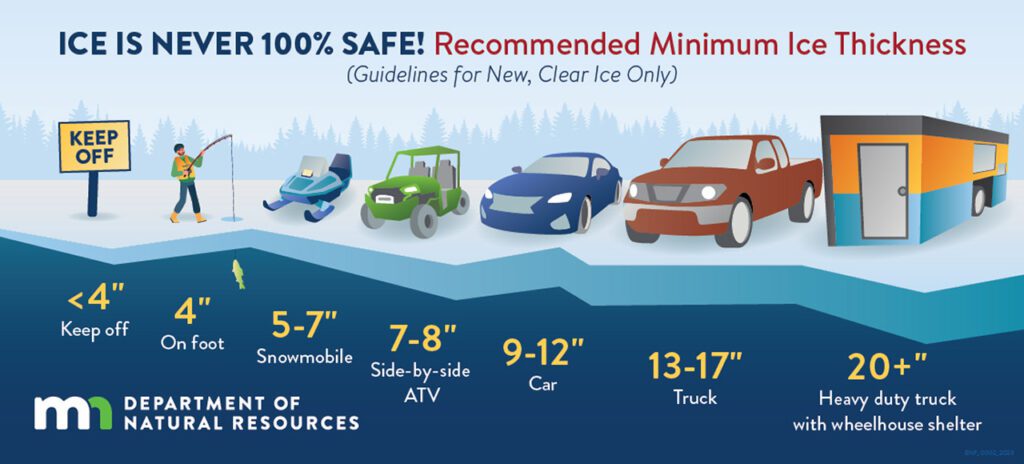What is ‘safe ice?’

With the drop in temperatures, many Northlanders are anxious to get out and enjoy winter fun. Whether it’s ice fishing, cross country skiing, or hopping on a snowmobile, it is very important to remember that ice on ponds, rivers or lakes will never be 100 percent safe.
The Department of Natural Resourses does not monitor ice conditions. Check with local bait shops and resorts to get the most up-to-date information on how thick the ice is on local lakes and rivers. Word of mouth is one of the best ways for ice anglers to find out which areas that are especially dangerous.
Knowing the condition of the ice before crossing could save your life. The strongest ice is clear or blue. Gray ice should be avoided.
Also remember, ice is not uniform across a body of water. Even if it is thick enough in one area, it may be too thin elsewhere. Things like water currents or deadheads under the surface can play a big roll in how thick the ice is. As you move further out, always test the ice and you go, and bring safety items with you.
So what are the general rules for how thick the ice should be? If the ice is two inches or less, stay off. The Minnesota Department of Natural Resources says four inch thick ice is strong enough for ice fishing, while five to seven inches is needed for snowmobiles and ATVs. Cars and small trucks need the ice to be 9-12 inches thick, and medium-sized trucks and anything larger requires at least a foot or more of ice.

If you park on ice, park each vehicle at least 50 feet apart and move every two hours to prevent any vehicles from falling through.
The buddy system is always a good idea when going on ice, just in case you were to fall through. If this happens, you have 2-5 minutes before the cold begins to affect you.
To get to safety, kick your legs, grasp for nearby ice, get yourself horizontal onto the ice, and roll toward thicker ice. Once out, get to a warm shelter immediately before hypothermia sets in.
Return to the STORM TRACK WINTER WEATHER GUIDE